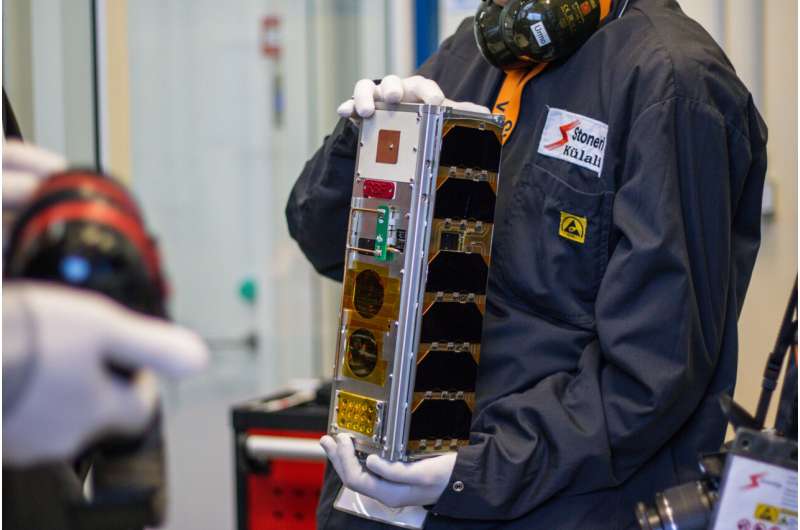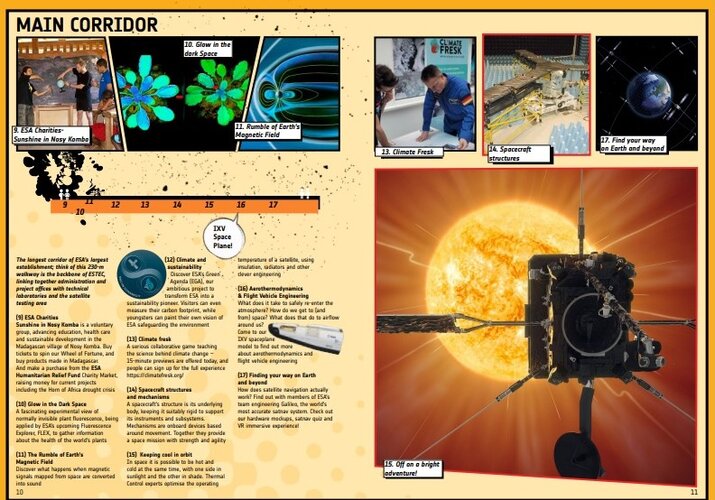
Copernical Team
China invites Chang'e-8 lunar probe mission global collaboration
 The China National Space Administration (CNSA) is offering opportunities for international cooperation on payloads that will piggyback on the country's Chang'e-8 lunar exploration mission, slated for launch around 2028.
The Chang'e-8 mission is open to all countries and international organizations for collaboration at either mission, system or single-machine levels in order to encourage mo
The China National Space Administration (CNSA) is offering opportunities for international cooperation on payloads that will piggyback on the country's Chang'e-8 lunar exploration mission, slated for launch around 2028.
The Chang'e-8 mission is open to all countries and international organizations for collaboration at either mission, system or single-machine levels in order to encourage mo Space needs better 'parking spots' to stay usable
 Any mission headed to space needs a "parking spot" at its destination. But these parking spots, regions located on orbits, are quickly becoming occupied or more vulnerable to collisions.
Most objects launching to space are satellites, which can travel faster than 4 miles per second in the regions where they park. About 10 times the number of satellites currently in space are expected to la
Any mission headed to space needs a "parking spot" at its destination. But these parking spots, regions located on orbits, are quickly becoming occupied or more vulnerable to collisions.
Most objects launching to space are satellites, which can travel faster than 4 miles per second in the regions where they park. About 10 times the number of satellites currently in space are expected to la Study quantifies satellite brightness, challenges ground-based astronomy
 The ability to have access to the Internet or use a mobile phone anywhere in the world is taken more and more for granted, but the brightness of Internet and telecommunications satellites that enable global communications networks could pose problems for ground-based astronomy. University of Illinois Urbana-Champaign aerospace engineer Siegfried Eggl coordinated an international study confirming
The ability to have access to the Internet or use a mobile phone anywhere in the world is taken more and more for granted, but the brightness of Internet and telecommunications satellites that enable global communications networks could pose problems for ground-based astronomy. University of Illinois Urbana-Champaign aerospace engineer Siegfried Eggl coordinated an international study confirming US slaps TV provider with first-ever space debris fine

US authorities said they have issued a "breakthrough" first-ever fine over space debris, slapping a $150,000 penalty on a TV company that failed to properly dispose of a satellite.
On Monday the Federal Communications Commission (FCC) came down on Dish for "failure to properly deorbit" a satellite called EchoStar-7, in orbit since 2002.
"This marks a first in space debris enforcement by the Commission, which has stepped up its satellite policy efforts," the FCC, which authorizes space-based telecom services, said in a statement.
As the geostationary satellite came to the end of its operational life, Dish had moved it to an altitude lower than the two parties had agreed on, where it "could pose orbital debris concerns," the FCC said.
Estonia's next satellite, largely built by undergrad students, to fly aboard Vega VV23

Estonia's next satellite will fly aboard Europe's Vega VV23 launcher later this week. While largely designed and built by undergraduate students, the shoebox-sized ESTCube-2 has ambitious goals in mind, including surveys of Estonian vegetation and the first successful in-orbit demonstration of "plasma brake" technology.
First spacewalk for Andreas Mogensen

ESA astronaut Andreas Mogensen will venture outside the International Space Station to install a new camera and prepare an experiment for a future upgrade on his first spacewalk on 12 October, starting at 16:00 CEST (15:00 BST).
Sunday’s ESA Open Day programme online

For all registered visitors for Sunday 8 October’s ESA Open Day at ESTEC in the Netherlands, the programme brochure for the day is now available to read through and plan your visit.
Researchers illuminate "Snowball Earth" melting and early life evolution
 A research team led by Prof. SHEN Yan'an from the University of Science and Technology of China (USTC) of the Chinese Academy of Sciences (CAS) conducted a systematic study of the interglacial stratigraphy in South China by means of high-precision sulphur and mercury isotope analyses. This study introduced a new perspective, suggesting that the melting of the "Snowball Earth" induced large-scale
A research team led by Prof. SHEN Yan'an from the University of Science and Technology of China (USTC) of the Chinese Academy of Sciences (CAS) conducted a systematic study of the interglacial stratigraphy in South China by means of high-precision sulphur and mercury isotope analyses. This study introduced a new perspective, suggesting that the melting of the "Snowball Earth" induced large-scale As Earth heats up, rain pours down
 Earth's land masses have a higher chance of becoming wetter than drier as temperatures rise. In a new study, researchers found that co-occurring precipitation and heat extremes will become more frequent, severe and widespread under climate change, more so than dry and hot conditions.
When wet-hot conditions strike, heat waves first dry out the soil and reduce its ability to absorb water. S
Earth's land masses have a higher chance of becoming wetter than drier as temperatures rise. In a new study, researchers found that co-occurring precipitation and heat extremes will become more frequent, severe and widespread under climate change, more so than dry and hot conditions.
When wet-hot conditions strike, heat waves first dry out the soil and reduce its ability to absorb water. S A newly identified virus emerges from the deep
 The Mariana Trench, the deepest place on Earth, plunges nearly 11,000 meters at its lowest point on the floor of the Pacific Ocean. Life persists in the deep and cold darkness, and "wherever there's life, you can bet there are regulators at work," said marine virologist Min Wang, Ph.D, at the Ocean University of China, in Qingdao. "Viruses, in this case."
This week in Microbiology Spectrum
The Mariana Trench, the deepest place on Earth, plunges nearly 11,000 meters at its lowest point on the floor of the Pacific Ocean. Life persists in the deep and cold darkness, and "wherever there's life, you can bet there are regulators at work," said marine virologist Min Wang, Ph.D, at the Ocean University of China, in Qingdao. "Viruses, in this case."
This week in Microbiology Spectrum 
